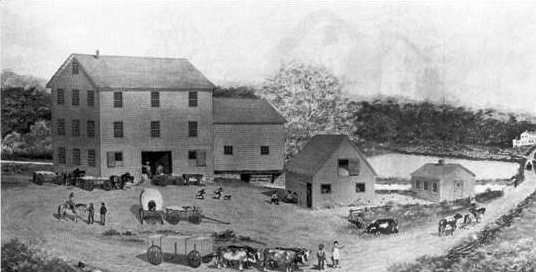Born on March 26, 1863, Bertha Van Hoosen spent her early years on her parents' farm in Stony Creek Village, Michigan. Free to roam about and observe the life cycle of the animals on the farm, she later recalled that the toughness of farm life gave her a practical, realistic outlook. As a young girl, she attended several public schools close to her home before graduating from high school in Pontiac, Michigan, at age 17. Following the example of her older sister Alice, she enrolled in the literary department at the University of Michigan in 1880. She met two women who had decided to study medicine here, and their enthusiasm inspired her to follow in their footsteps. Despite her parents' refusal to finance her education, she enrolled in Michigan's medical department after receiving her bachelor's degree in 1884. To pay her way, she earned money teaching calisthenics at a high school, serving as an obstetrical nurse and teacher, and demonstrating anatomy. Four years later, she graduated with her doctor of medicine degree.
Dr. Van Hoosen accepted a series of residencies, first at the Woman's Hospital in Detroit, then at the Kalamazoo, Michigan, State Hospital for the Insane, and finally at the New England Hospital for Women and Children in Boston. She felt ready to begin private practice after four years of additional hospital training.
With money saved from her previous jobs, young Dr. Van Hoosen opened a private clinic in Chicago in late 1892. Like most new practices, hers grew slowly. To keep the practice afloat, she taught courses in anatomy and embryology at the Woman's Medical School of Northwestern University. At the same time, she continued her postgraduate training, accepting a clinical assistantship in gynecology at the Columbia Dispensary in Chicago (later reorganized as the Charity Hospital and Dispensary), where she received further instruction in surgery and obstetrics. As her medical expertise grew, Dr. Van Hoosen's private practice flourished, and she was in great demand as a teacher.
 |
| Dr. Bertha Van Hoosen |
In 1902, though her appointment was opposed by the male faculty, she was made a professor of clinical gynecology at the Illinois University Medical School, a position she held until 1912.
In 1913, Dr. Van Hoosen was appointed head of the gynecological staff at the Cook County Hospital, thus becoming one of the first women in the United States to receive a civil service appointment. In 1918, she was awarded a prestigious post as head of obstetrics at Loyola University Medical School, making her the first woman to head a medical division at a coeducational university. Dr. Van Hoosen continued to maintain her private practice and to serve as an attending physician at several additional Chicago hospitals.
Dr. Van Hoosen devoted herself to treating women and children throughout her career. In addition to helping develop better methods of prenatal care, she lectured widely on sex education as a member of the Chicago Woman's Club Committee on Social Purity. In addition, she pioneered the use of scopolamine-morphine anesthesia during childbirth. Popularly known as "twilight sleep," this form of anesthesia rendered patients unconscious without inhibiting their reflexes. Dr. Van Hoosen delivered thousands of healthy babies and published a book and several articles detailing her research.
An outspoken feminist, Dr. Bertha Van Hoosen grew increasingly vocal over the medical establishment's discriminatory treatment of women. Barred from membership in the Chicago Gynecological and Obstetrical Society and discouraged by her isolation within the American Medical Association, she called for a meeting of medical women in Chicago. Their panel led to the formation of the American Medical Women's Association in 1915, with Van Hoosen as the organization's first President.
In 1947, Bertha Van Hoosen, M.D., published an autobiography detailing her pioneering role in medicine and her abiding interest in women's health issues. After more than sixty years, she had done much to advance the position of women in medicine—training physicians, fostering closer ties among her women peers, and serving as a model for those striving to enter fields previously closed to women. In addition, Dr. Van Hoosen could reflect on a rewarding career teaching and practicing obstetrics.
Throughout her career, Dr. Van Hoosen trained several dozen women surgeons. She maintained close ties to her female colleagues, offering surgical assistance to her female peers throughout the United States and her travels through Europe and Asia.
After retiring from practice in 1951 at age 88, she died of a stroke on June 7, 1952. She is buried at Old Stoney Creek Cemetery in Rochester Hills, Michigan.
 |
| Dr. Bertha Van Hoosen's Illinois State Historical Society marker is located in the South Lobby of the Fine Arts Building at 410 South Michigan Avenue, Chicago. GOOGLE MAP |
Compiled by Dr. Neil Gale, Ph.D.



























.jpg)






















